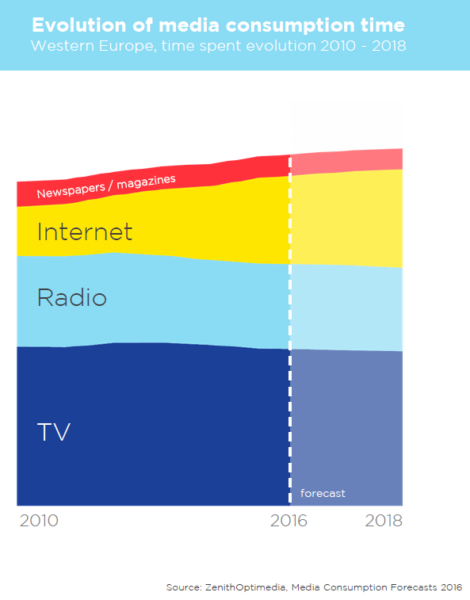For this first episode of the year, we innovate a little and offer you a podcast in English. Our first interviewee of the year is a reference when it comes to the advertising market and the universe of media. Paul Lee is Deloitte’s Global Head of Research for the telecom, media and advertising markets. A triple skill that allows him to take an innovative and in-depth look at a market that has been in almost constant change since the 2000s.

This podcast follows Paul’s presentation on future advertising trends at the BAM (Belgian Association of Marketing) congress. This remarkably clear presentation detailed the decline of traditional linear television before taking us into new media formats such as Instagram and Tik Tok. Logically advertising space follows the expansion of media forms and it is trends in this changing advertising market that Paul Lee will talk about in this podcast.
The idea to keep in mind
The television set could become a zero-margin data collection device. The data collected and then resold would be the source of the creation of value for manufacturers.
Highlights of this podcast
- The number of hours of television consumed is declining in most countries. This decline is slight for the population as a whole but much more pronounced in some age groups. Among the under-34s in particular, there has been a significant decline (sometimes double-digit) over barely five years.
- The effects of this decline have essential marketing implications. Television is indeed a powerful vector for the construction of brand images (branding) across all segments of the population. The decline in certain age groups will, therefore, complicate the task of marketers and require a multiplication of marketing efforts.
- The radio medium is not affected in the same way as the television because it is often listened to in the “background”. Listeners have always been accustomed to commercial breaks.
- Television is faced with the challenge of the premium, advertising-free pay-per-view model. According to Paul Lee, one of the trends of the next few years will be the increasing presence of advertising in the on-demand model.
- Smartphones and the forms of media that have been developed specifically for this form of screen, make it possible to consume more at times of the day that were previously devoid of specific consumption (in public transport, on the street). This logically leads to an increase in the total amount of media consumed per day.
- Paul Lee insists on the complementarity of the different types of screens. The smartphone is a small screen with interactive features not found on a conventional TV screen.
- Media such as Instagram and Tik Tok allow the emergence of new types of communication languages and advertising messages. In particular, these media allow personalities to develop further links with their audiences, to promote products based on a (virtual) proximity relationship, which is a new marketing foundation.
- Targeted advertising will become more accurate in the coming years. Paul Lee predicts the emergence of TVs selling at cost price, thanks to which manufacturers will collect data that will then be resold (which will not be without raising new legal questions, cf. our study on the GDPR). This will be a new paradigm. In the same way, Nespresso sells its machines without making a profit but is compensated by the sale of capsules. In the future, television sets could become even more accessible connected devices whose value would be built up over time (7-8 times) based on user data sold to third parties.
- Content available is increasing exponentially. Associated costs are also increasing significantly. Meeting the insatiable demand of viewers will require an exchange of data to finance creation.
In 5 years, most on-demand video services will therefore be accompanied by new forms of advertising on television. For example, banner ads will appear.
Cover image : courtesy Shutterstock
Posted in Research.